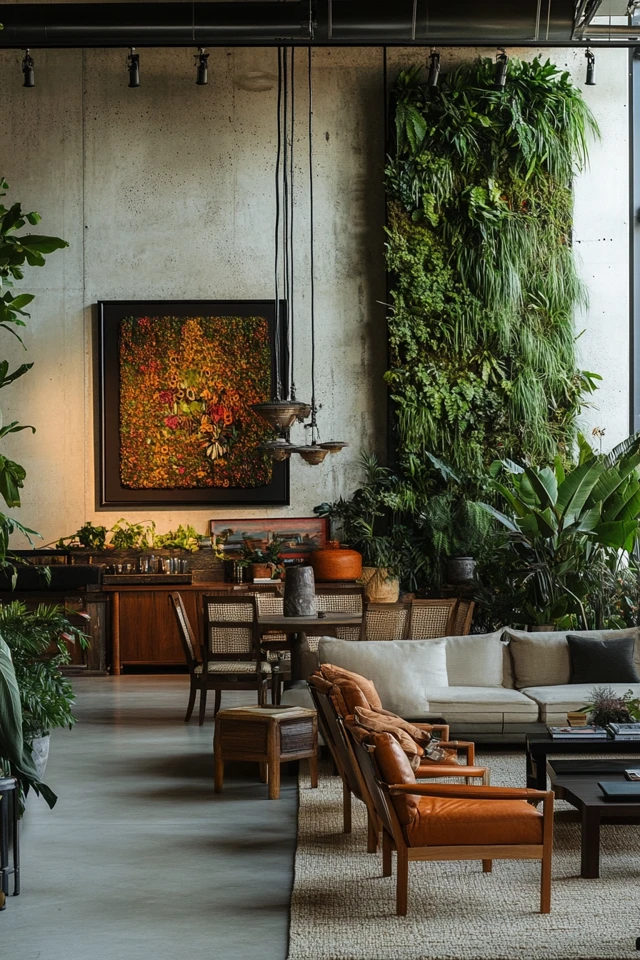Introduction
When it comes to decorating and organizing, we often focus on floors, furniture, and tabletops, leaving one key area underutilized: vertical space. Walls and vertical areas are brimming with potential to add style, functionality, and depth to any room. Whether you’re working with a small apartment or a spacious home, maximizing vertical space can elevate your design and make your space feel more polished and purposeful.
I’ll never forget the transformation of my first tiny studio apartment. With limited floor space, I had to get creative, and that’s when I discovered the magic of vertical design. I installed floating shelves above my desk to store books and plants, hung a bold piece of artwork over the sofa, and added a tall mirror to make the room feel larger. The results were stunning: my little space felt bigger, more organized, and full of personality.
Vertical design isn’t just for practicality; it’s an opportunity to express your style in unexpected ways. From floor-to-ceiling gallery walls to dramatic hanging plants, this guide will show you how to make the most of vertical space for stylish impact.
The Perfect Design for You
Maximizing vertical space is ideal for anyone who wants to create a more efficient, organized, and visually dynamic home. Whether you’re tackling small-space challenges or looking to enhance your existing design, vertical decor works for every aesthetic.
Imagine a home office with wall-mounted shelves that display beautiful decor while keeping the desktop clutter-free. Or a living room where tall bookcases draw the eye upward, giving the space a grander feel. Even kitchens can benefit from vertical design, with hooks for pots and pans or a pegboard wall to store utensils.
Vertical space isn’t just about storage—it’s about enhancing the style of your room. By drawing attention to walls and tall elements, you can create a balanced, layered look that makes your space feel thoughtfully curated.
Picture Gallery
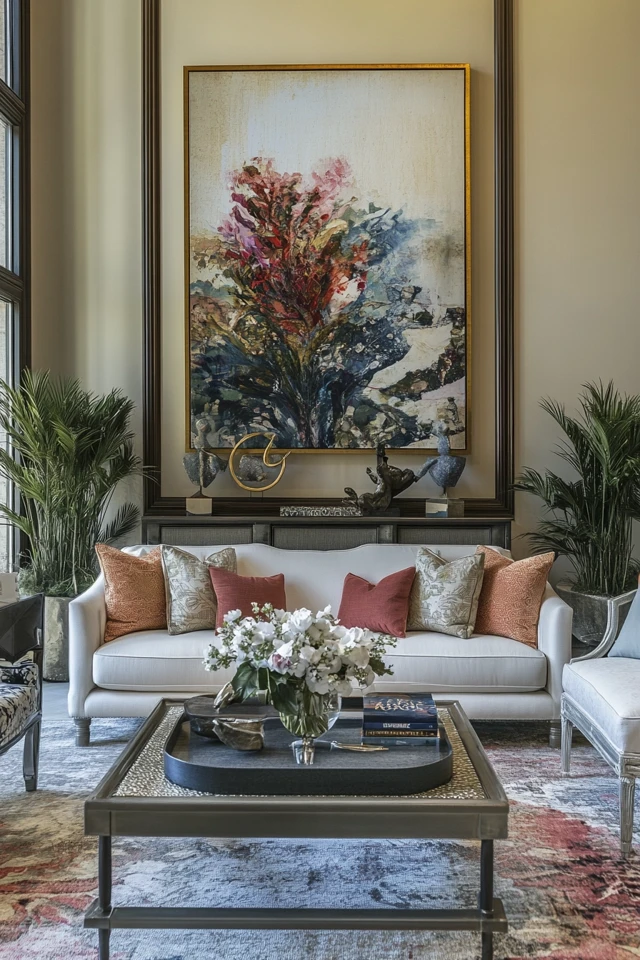
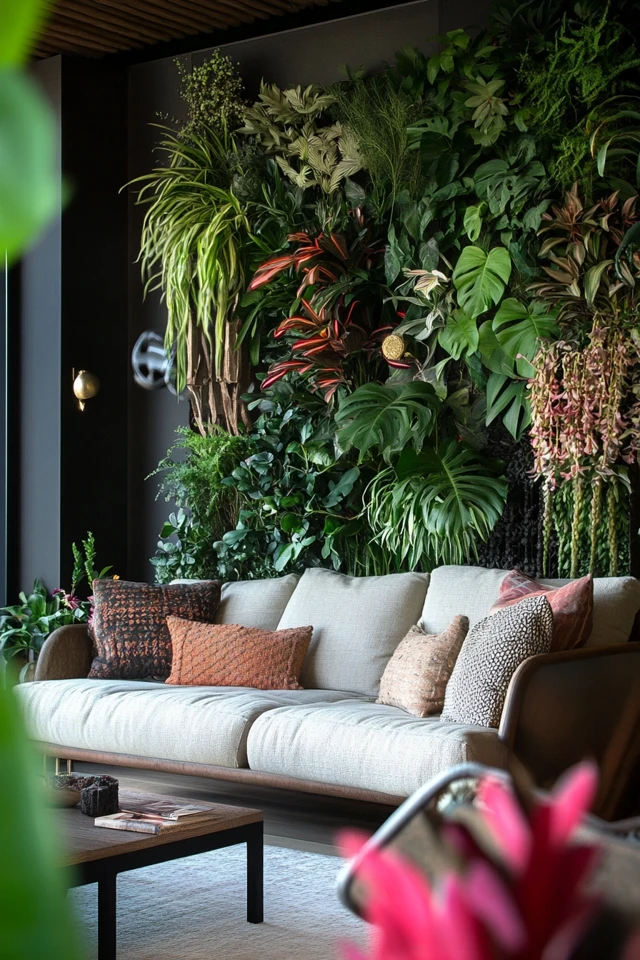
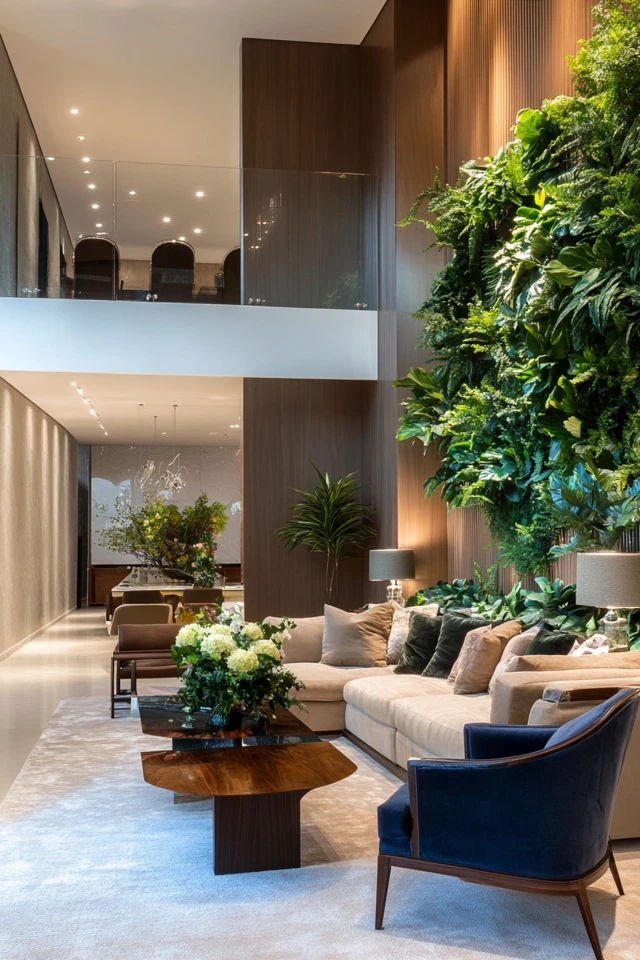
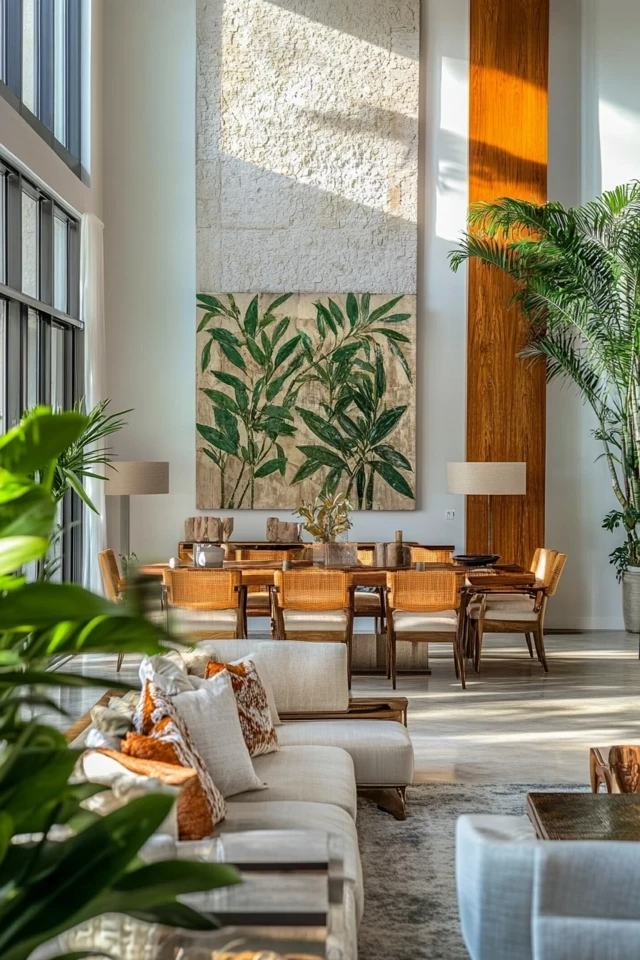
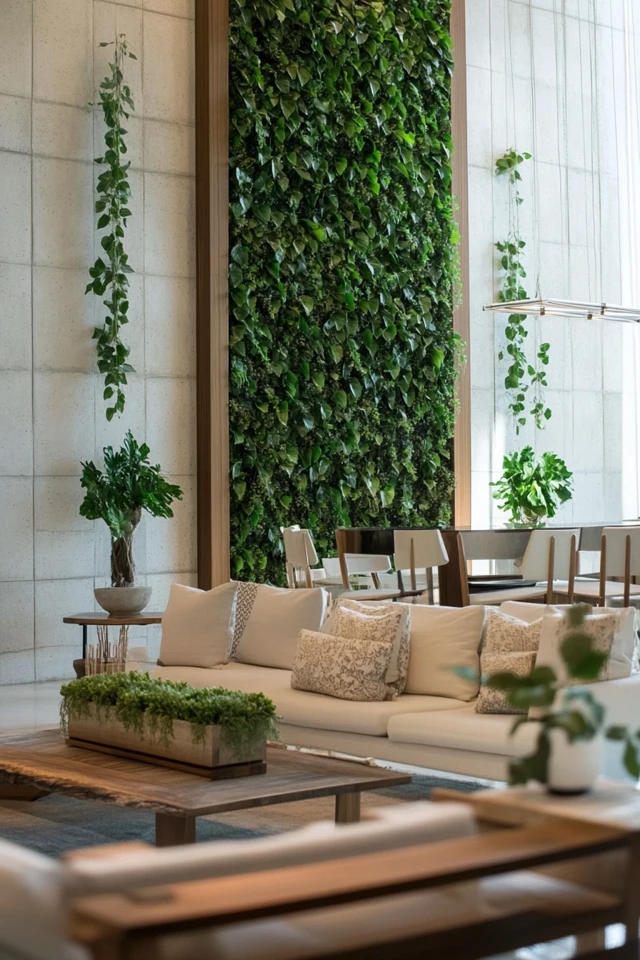
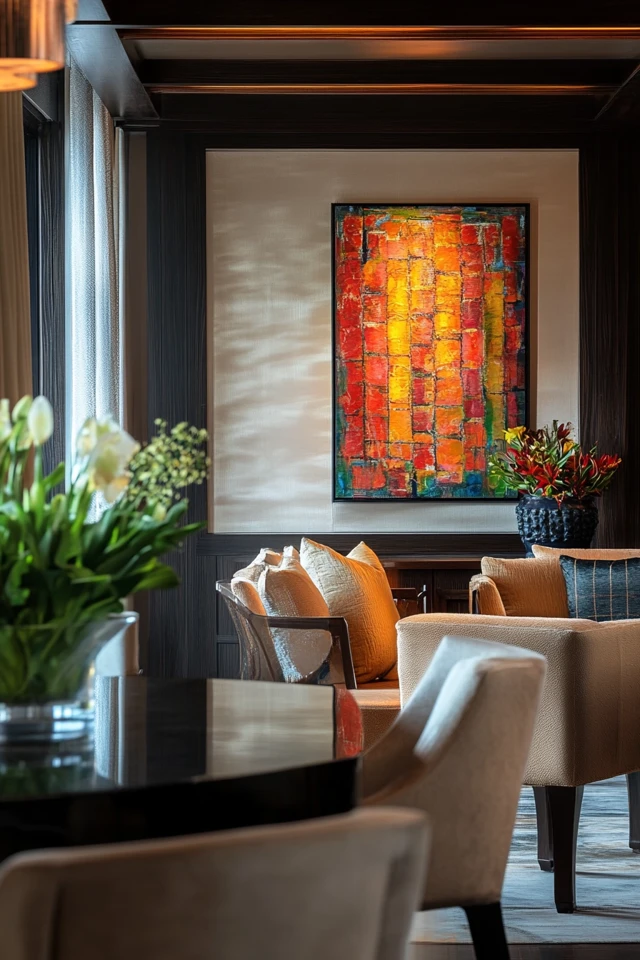
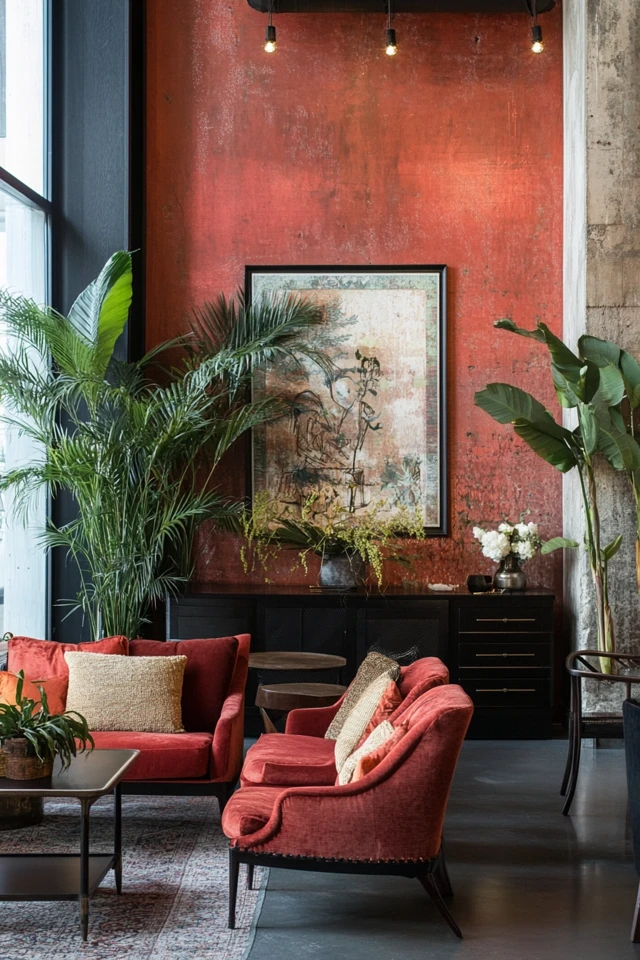
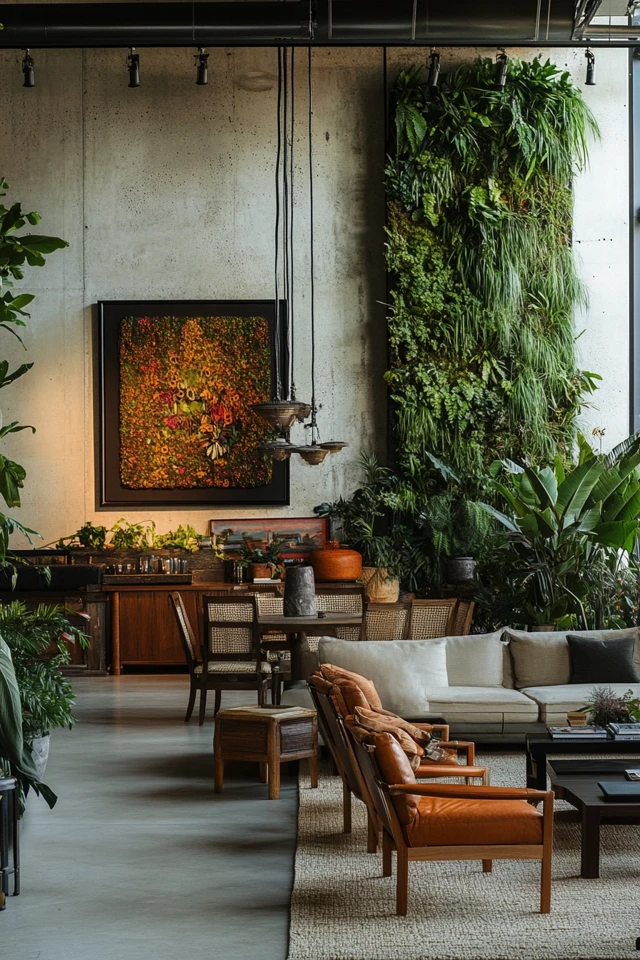
Why These Key Elements Work So Well Together
Vertical design succeeds because it creates balance, adds dimension, and maximizes functionality without crowding your space. Here’s why these elements work so well together:
- Height Adds Drama: Tall furniture and decor naturally draw the eye upward, making ceilings feel higher and rooms feel more spacious. For example, a tall bookshelf or a vertical garden can create a sense of grandeur.
- Layered Visual Interest: Vertical elements like floating shelves, wall art, and hanging decor add layers to flat walls, giving your space more depth and character.
- Practical Functionality: Using walls for storage or decor frees up valuable floor space while keeping your home organized and stylish. A mix of open shelving and closed storage creates balance and reduces clutter.
Research in evidence-based design shows that vertical elements can make small spaces feel larger and more cohesive. By utilizing height, you create a more harmonious flow that enhances both functionality and aesthetics.
How to Maximize Vertical Space: Step-by-Step
1. Assess Your Walls
- Walk through your home and identify underutilized walls or vertical areas. Look for spots above furniture, near doors, or in corners that could benefit from vertical decor or storage.
2. Define Your Purpose
- Decide what you want to achieve with your vertical space:
- Storage: Install shelves, hooks, or pegboards to keep items organized.
- Style: Use vertical space to showcase artwork, plants, or decor.
- Functionality: Add elements like wall-mounted desks, mirrors, or lighting.
3. Incorporate Tall Furniture
- Add height to your space with tall furniture like bookcases, armoires, or cabinets. For smaller rooms, choose pieces with a slim profile to avoid crowding the floor area.
4. Install Floating Shelves
- Floating shelves are a versatile way to maximize wall space. Use them for:
- Books, plants, or decorative objects.
- Kitchen storage for spices, utensils, or mugs.
- Bathroom organization for toiletries and towels.
5. Create a Gallery Wall
- Fill an empty wall with a mix of art, photos, and mirrors. Arrange pieces in a vertical layout to emphasize height and create a dramatic focal point.
6. Hang Plants or Lighting
- Add dimension with hanging decor. For example:
- Suspend planters at varying heights for a vertical garden.
- Use pendant lights or sconces to add functional style to walls.
7. Use Overhead Space
- Don’t forget the space near the ceiling! Install high shelves for rarely used items or hang curtains above window frames to create the illusion of taller ceilings.
8. Install Pegboards or Hooks
- Pegboards are perfect for kitchens, garages, or craft rooms. Use hooks to store tools, utensils, or supplies in a stylish and accessible way.
FAQ
1. Why is vertical space important in interior design?
Vertical space helps maximize functionality and adds style by drawing the eye upward. It’s especially useful in small rooms where floor space is limited.
2. How can I use vertical space without making my room feel cluttered?
Stick to a consistent color palette and avoid overloading walls. Balance open shelves with empty space, and choose tall furniture with clean lines.
3. Can vertical space work in small rooms?
Yes! Vertical design can make small rooms feel larger by creating the illusion of height and freeing up floor space for essential furniture.
4. What are affordable ways to use vertical space?
Try DIY floating shelves, thrifted tall furniture, or simple hooks and pegboards. Hanging plants and framed art are also budget-friendly options.
5. How do I create a cohesive look when using vertical space?
Use materials and colors that match your room’s overall design. For example, if your room has a natural theme, opt for wooden shelves and organic textures.
Variations
- Minimalist Approach: Use sleek, open shelving with only a few carefully curated decor items. Keep the color palette neutral for a clean, airy look.
- Industrial Style: Combine metal shelving, exposed pipes, and hanging Edison bulb lights to create a bold, urban vibe.
- Bohemian Touch: Add hanging plants, macramé wall art, and textured wooden shelves for a relaxed, eclectic feel.
- Modern Glam: Use tall metallic furniture, mirrored shelves, and dramatic lighting to make a luxurious statement.
- Family-Friendly Design: Incorporate practical vertical elements like chalkboard walls, toy storage shelves, or hooks for backpacks and coats.
How to Showcase It
- Everyday Use: Add floating shelves to living rooms or bedrooms to display books, plants, and photos for a layered, personal touch.
- Kitchen Organization: Use vertical space to store pots, pans, and utensils with a pegboard or wall-mounted hooks.
- Small-Space Living: Install high shelves or tall mirrors to make compact apartments feel more open and functional.
- Seasonal Decor: Use vertical space for rotating seasonal decorations, like wreaths, garlands, or festive lights.
- Creative Displays: Showcase art, collectibles, or handmade items in a vertical layout to turn your walls into a gallery.
Occasions to Feature It
- Housewarming Party: Impress guests with a vertical gallery wall or a well-organized shelving unit that reflects your personality.
- Holiday Gatherings: Decorate with vertical accents like hanging lights, stockings, or themed art to add festive flair.
- Daily Living: Enjoy the practicality and style of a clutter-free room that maximizes every inch of space.
- Entertaining: Create a stunning dining room wall with tall cabinets or vertical shelving to showcase glassware and decor.
Conclusion
Making the most of vertical space is a game-changer in interior design. Whether you’re working with limited square footage or simply want to elevate your room’s style, vertical elements add depth, function, and elegance to any space.
From installing floating shelves to adding tall furniture or hanging plants, the possibilities are endless. Vertical design not only helps keep your home organized but also draws the eye upward, creating a sense of height and openness.
Start small by identifying underutilized walls or corners, and experiment with creative solutions like artful gallery walls or hanging decor. With thoughtful planning, you can turn every inch of vertical space into a stylish and impactful part of your home. Embrace the heights of design and watch your room transform!

